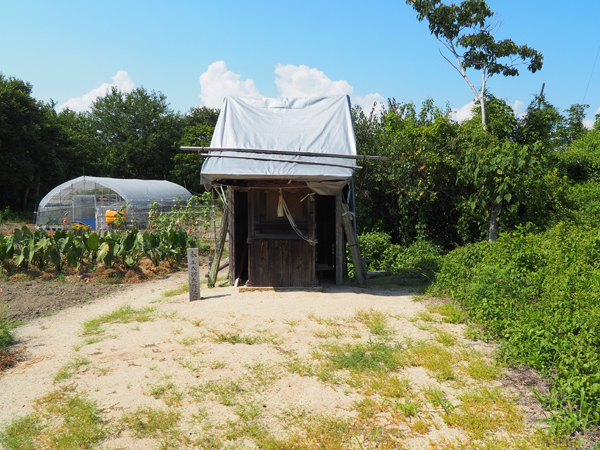Series “Visiting Villages” 34 A Trip to the Ado River Basin with the Author of “Shrines at Rest: The Changing Future of Sacred Places” ②

Shrines are born as testament to the vitality of a community, reflecting its origins, its formation, and the influence of its natural environment. It’s said that there were once six times as many shrines as there are today. This suggests that premodern Japanese communities were far more diverse and free than they are today. (Kei Kitajima)
“Shrines Under Guardianship: The Changing Future of Sacred Places” focuses on shrines scattered throughout Japan, depicting their origins, their roots in their communities, their changing roles in response to social conditions, and, in some cases, their disappearance from the community.
I believed that by tracing the life of a shrine—from its birth to its demise, so to speak—we could glimpse, albeit indirectly, the life cycle of a community and gain insights into what it means to close a community, or what a healthy way to close a community is.
We left Otsu Station and headed for Aya Shrine. Aya Shrine is located in the Imazaike settlement in Yokoehama, Azumigawa Town, Takashima City, upstream of the Azumi River.
Imazaike has a long history, dating back to the Heian period. It began when people settled on the sandbar that formed between Lake Biwa and the inner lake downstream of the Azumi River.
The Saito clan lived in this area, and Aya Shrine is enshrined as their guardian deity.
Currently, Aya Shrine is looked after by Saito Seikichi and Saito Mitsuyoshi, descendants of the Saito clan. We headed to Aya Shrine to interview them.
It’s about a 40-minute drive from Otsu Station to Aya Shrine.
According to Professor Shimada, before the modernization of Japan during the Meiji period, there were about six times as many shrines as there are today.
“During the Meiji period, consolidation of shrines progressed, with one region housing four to five, and in some places as many as eight. This was because the Meiji government needed to create a state religion to replace Christianity in order to confront Western powers. To that end, they decided to promote State Shinto, but with so many shrines scattered throughout Japan, managing them became extremely complicated. Therefore, they decided to limit management to one shrine per village, simplifying management,” he explains.
As part of this, the Meiji government created a map of shrines, standardizing the style and size of shrine buildings. As a result, all shrines in Japan became standardized, with similar furnishings.
“The form of shrines was originally more diverse and free, and their roles varied. But this was fixed by state power. In terms of Japanese traditions, today’s shrines do not necessarily represent Japaneseness,” says Professor Shimada.
The term “restorationism” has become a common refrain in recent years. Simply put, it’s a philosophy that values tradition and aims to return to that state. Restorationism is constantly debated, but in Japan, restoration often refers to the Meiji period. In other words, it’s a post-modern Japan that’s been molded into a mold.
It’s true that Japan had its ups and downs, but it got modernization on track and achieved great success in the industrial age, dominating the world. While it’s understandable to want to rediscover the sweet taste of success, that era was actually a time when tradition was destroyed. If we truly value Japanese tradition and aim to return to that state, we should look at pre-modern Japan. Considering today’s sensibilities, where diversification is often called for, pre-modern Japan is a better fit.
Professor Shimada says, “I want to visualize the diversity that Japan originally possessed through shrines. A major paradigm shift is necessary to revitalize local areas, and that movement must originate in the local areas. I think using shrines as a catalyst for this is one possibility.” A distinctive feature of Professor Shimada’s area studies is that he investigates the origins and formation process of a region, as well as its natural environment, and sees shrines as evidence that the region is still alive and well.
“For example, there are shrines that warn people when water reaches a certain point during a tsunami or flood. Small shrines scattered throughout Japan in particular are imbued with various messages, and have inherent value that cannot necessarily be defined as religious facilities. Properly grasping these messages and value is important in understanding a region. From this perspective, I focus my research on lesser-known shrines” (Professor Shimada).
“I see, so that’s what you call sacred places?”
When I casually asked him this, he gave a wry smile and said, “Actually, I don’t like to use the word sacred place. I just can’t find the right word…”
The word “sacred place” has a solemn ring to it, evoking a transcendental space of prayer. However, in the case of shrines, some are nothing more than a small altar or a stone. There are many shrines that are so modest and inconspicuous that people who are unfamiliar with them would pass them by without noticing, so the expression “sacred place” is an exaggeration and misses the point.
“‘Religion’ and ‘sacred place’ are modern translations of English words that originally did not exist in Japan. As a result, we simply could not find a general term to encompass all small shrines, so we were forced to use the word “sacred place.” Conversely, the lack of a general term is symbolic of Japan’s diversity,” says Professor Shimada.
※Translating Japanese articles into English with AI
